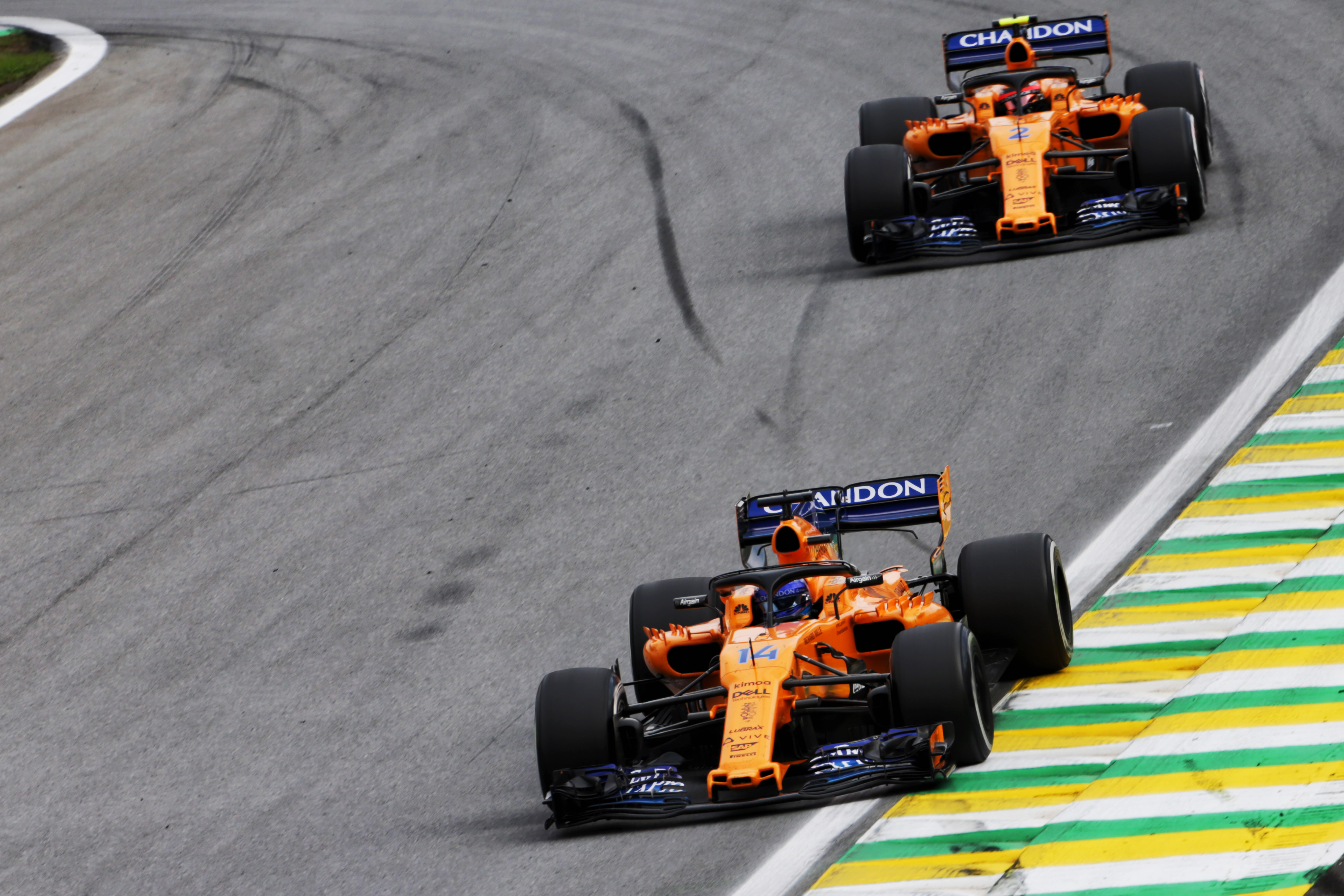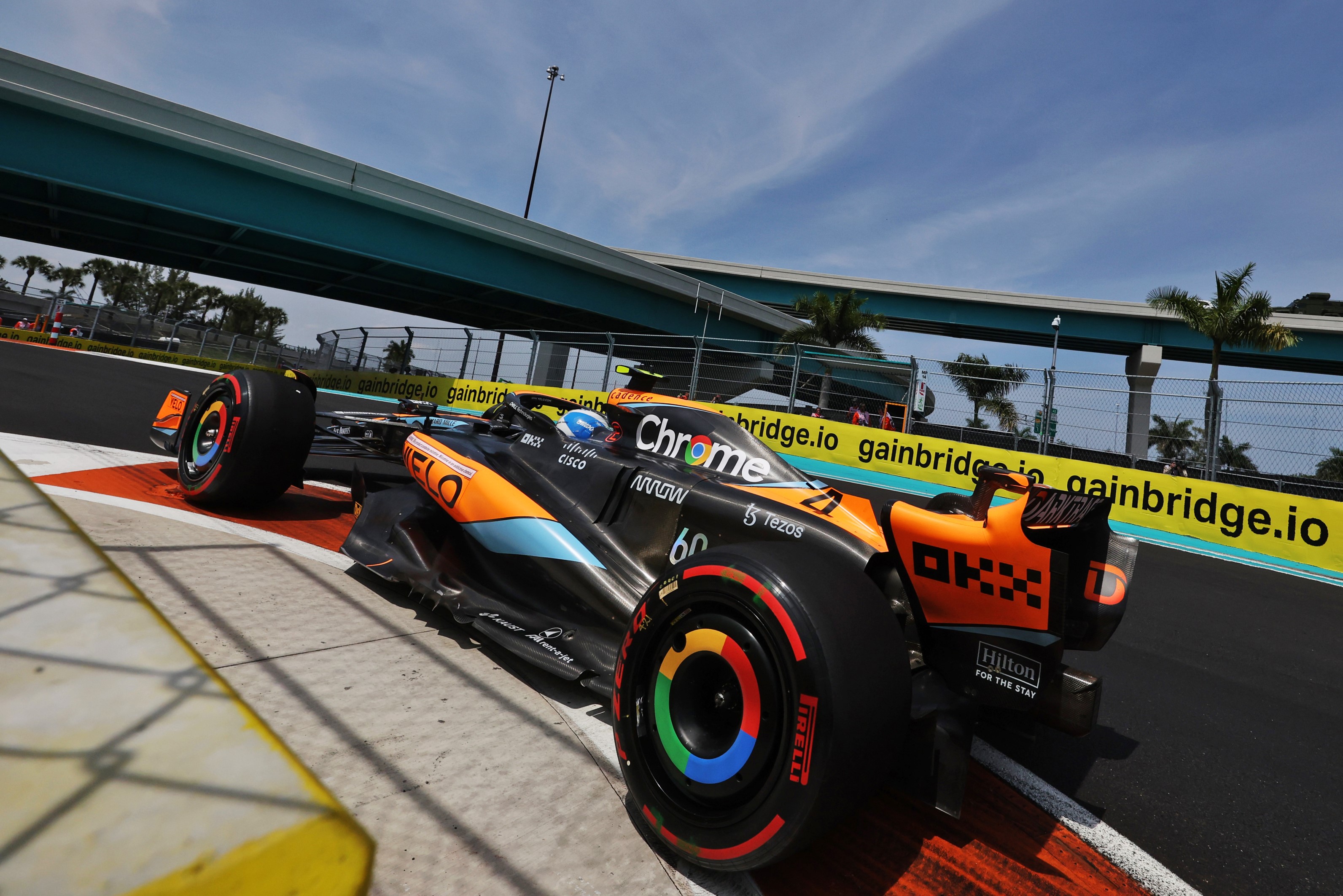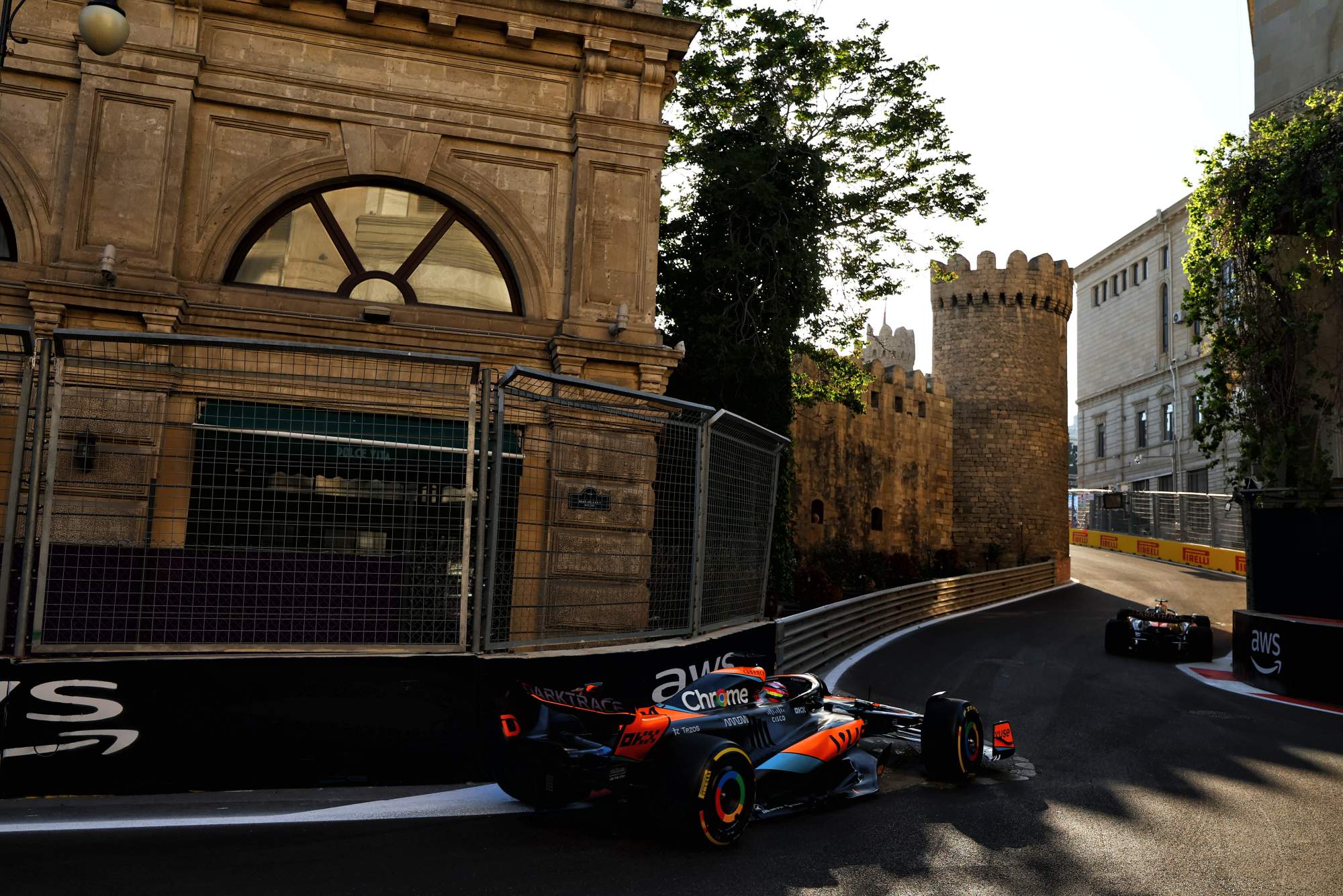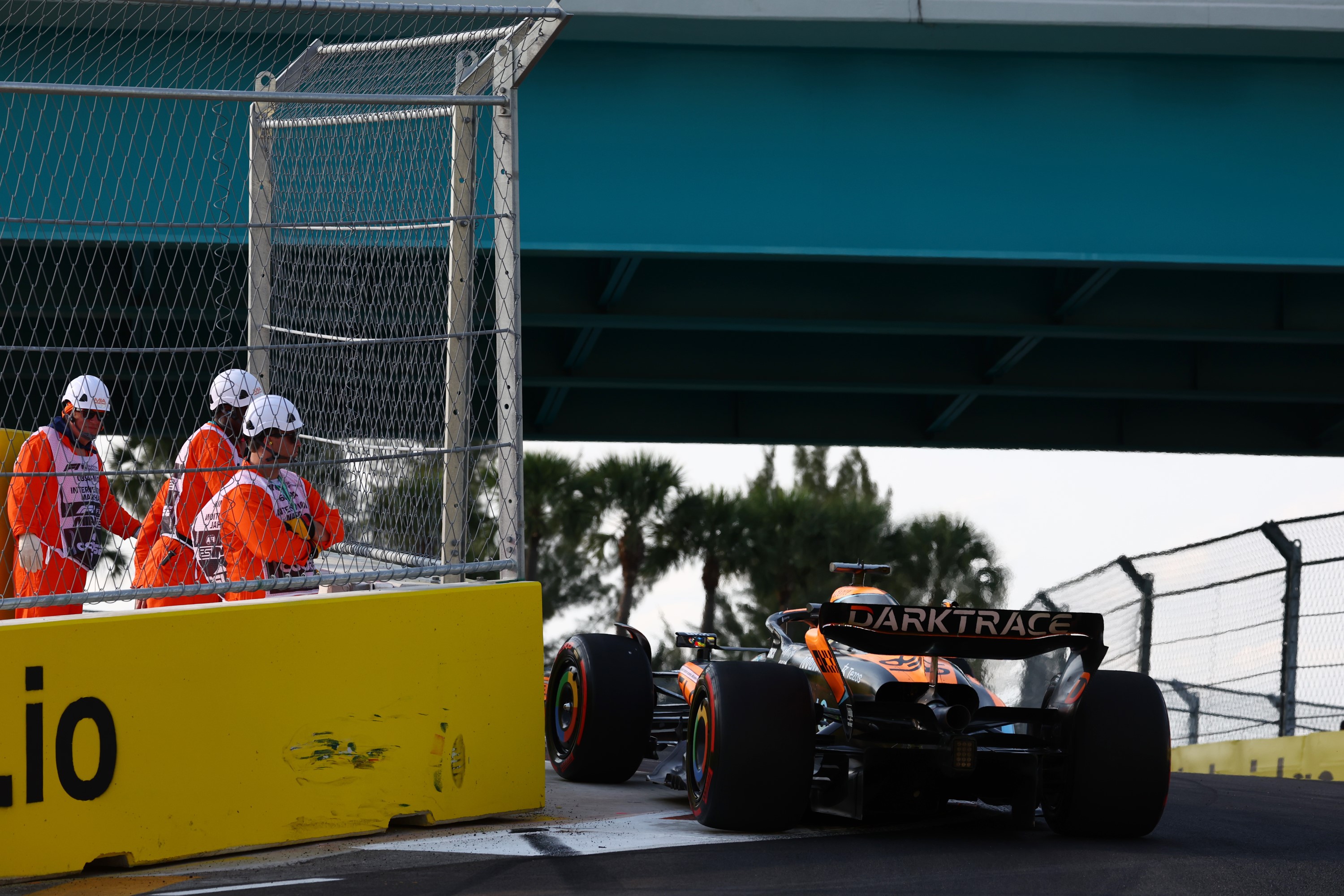McLaren’s poor performance in qualifying for the Miami Grand Prix is down to what team principal Andrea Stella describes as a “trend emerging” for the MCL60 to struggle in low-grip conditions.
Both McLarens were eliminated in Q1 for the first time since the 2018 Brazilian Grand Prix – a whole 88 F1 race weekends ago – when Fernando Alonso and Stoffel Vandoorne had qualified 18th and 20th respectively in the McLaren MCL33, which had grown increasingly uncompetitive at the end of that season.

This time, Lando Norris qualified 16th and team-mate Oscar Piastri was three places lower. Norris admitted that a small mistake cost him a place in Q2, but suggested “we probably wouldn’t have achieved much more than 15th” given the pace of the car.
This slump in form follows a strong Azerbaijan Grand Prix weekend where McLaren headed the midfield after the introduction of a major upgrade package centred on a revised floor concept.
While it appears an unexpected performance swing, team principal Andrea Stella argues some of the reasons for its poor Miami were evident, but less influential in terms of laptime, on the streets of Baku. It’s also important to note that the field was covered by just 1.2s from fastest to slowest car in Q2, although the spread was comparable in both Bahrain and Australia.
Stella pointed to McLaren losing competitiveness when the track is low-grip, in particular in slow corners such as the Turn 11-16 section where the car’s losing significant time in Miami, as the reason for its poor pace.
“I think there’s a trend emerging,” said Stella when asked to explain why qualifying was poor.
“This trend is that when the grip is high, our car gains competitiveness. This track here, despite the new Tarmac, is still very low-grip, so we have this trend.

“This trend is related to the fact that the lower the grip, the more you have to spend time off brakes, off throttle. And this is a situation in which our car doesn’t work very well.”
McLaren flattered to deceive in Friday practice in Miami, with Norris setting the sixth-fastest time in FP2.
Norris argued that was an unusually good lap for that stage of the weekend that made McLaren look “extremely good”. This was partly down to the fact this was the point of the weekend where the track was highest-grip, owing to the track temperatures.
“In P2 yesterday, it was the highest point in terms of grip because not only was it later in the day, but it was also overcast,” said Stella. “Track temperature and ambient temperature were low, so the car was much happier and the drivers could attack.
“If you attack the braking, then you minimise the space in the corner in which you roll out of the brakes, out of the throttle and immediately we gain competitiveness.
“If we look at Baku, for instance, with the new Tarmac this year, the grip was high. And in all the sections where you can brake hard, short corners, like Turn 1, Turn 2, we were competitive. But if you see the castle section, where you have to roll, we were not very competitive, even in Baku. So there’s a trend.

“We knew that with the Baku upgrade we added some downforce but we didn’t change the characteristics of the car.
“So I’m not too surprised that in these low-grip conditions, spending a lot of time out of brakes, out of throttle, we lose relative competitiveness.”
McLaren admitted to missing its targets for aerodynamic efficiency with the MCL60 at the start of the season and the car is still carrying too much drag.
In Miami, it has the ninth-fastest car in the main speed trap, quicker only than the Ferrari, posting a top-speed 5.8km/h off pacesetter Red Bull. But this weakness was also in evidence in Baku.
But as Stella explained, the problem extends beyond that. Now this weakness is at least partially understood, he indicated it would become a focus of ongoing development.
“The advantage of having identified a weakness is that you can centre your development in those conditions,” said Stella. “For instance, the number of runs you do in CFD or the way you develop your car in the windtunnel, you may refocus the development in this area.

“We see that the car is strong in straightline braking, we see that the car is strong in high-speed sections. Even here, despite the poor performance, we don’t lose time in the high-speed esses.
“So the advantage is that you can steer and centre your development, but it’s not necessarily an easy task. The car in terms of the current configuration is where the car really should have been in race one.
“Now we have good developments coming and what we are learning in these early races is that we need to put even more focus in this condition – off brakes, off throttle and towards low-speed.”
These weaknesses have been long-term problems for McLaren and Stella suspects that partly they are the consequence of the limitations of its windtunnel facility.
McLaren currently uses one of the Toyota motorsport windtunnels in Cologne, but is close to completing its state-of-the art facility at its Woking base. Stella believes this offers the potential to tackle some of these problems.
Although Stella cited straightline braking as a strength, the McLaren has been tricky in ‘combination’ corner entries requiring both braking and turning. Similarly, longer corners have often been a weakness.
“It seems like the pattern hasn’t changed,” said Stella when asked whether these weaknesses are part of the DNA of McLaren machinery.

“Within the advantages of adding overall more load and less drag, there’s this pattern potentially associated to the infrastructure that we are improving, of conditions that at the track are very challenging because you are in a curvature which you can’t simulate in the windtunnel properly.
“Certainly, with the windtunnel that we use it is even more difficult than other facilities and it will become easier and more representative in the windtunnel that we’ll have available in the short term. And this is because you have a better representation thanks to, for instance, having adaptive walls in the windtunnel of what the car sees on track.
“So there’s a possibility that what you call DNA is associated to some limitations of the methodologies that we have used now for years that seem to be leading, despite a change of regulation, to the same operating point.
“We will know more in a few months once we compare what we see in the MTC windtunnel to the windtunnel that we’ve been using for the last years.”




